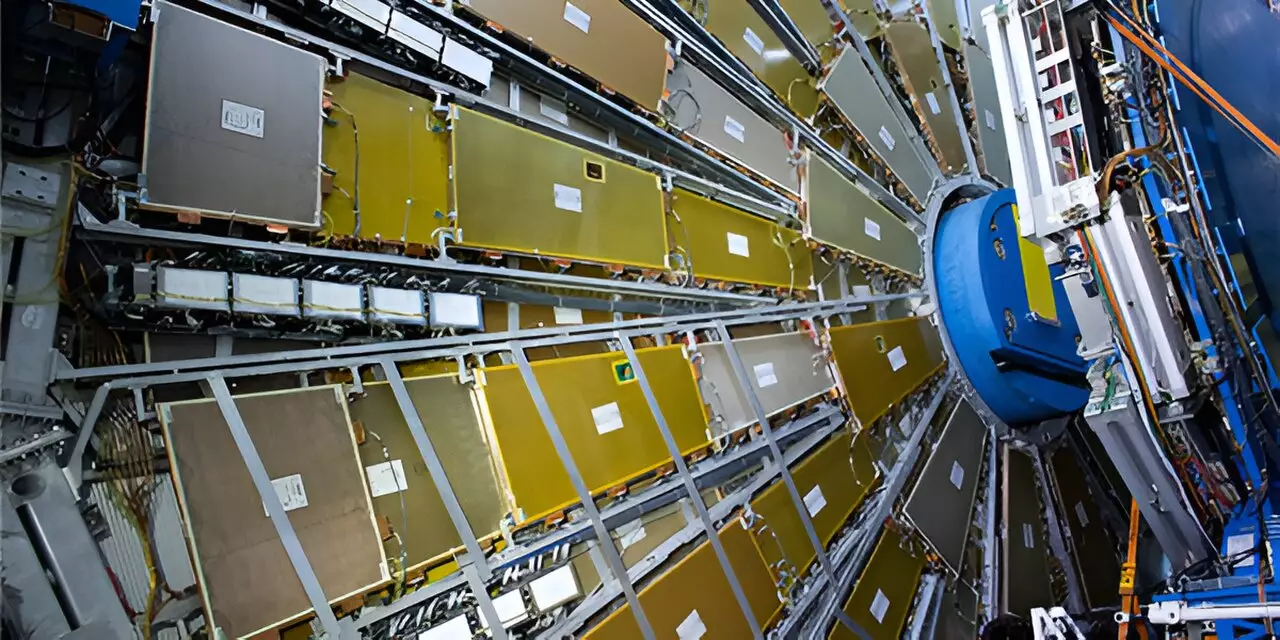The world of particle physics operates on the smallest scales imaginable, unveiling the fundamental components of matter and the forces that govern their interactions. Recently, researchers Andreas Crivellin from the University of Zurich and Bruce Mellado from the University of the Witwatersrand have shed new light on these interactions, presenting findings that suggest the existence of additional bosons. These potential discoveries, outlined in their publication in *Nature Reviews Physics*, could significantly alter our understanding of the universe’s underlying structure.
Their research focuses on peculiar discrepancies known as multi-lepton anomalies, which indicate unexpected behaviors in the way leptons—fundamental particles like electrons—decay and interact. As the physicist Mellado notes, “From the multi-lepton anomalies one can predict the existence of a new Higgs-like boson, somewhat heavier than the one discovered in 2012.” This assertion is particularly intriguing as it implies the presence of a new particle emerging from the decay of an even heftier boson, consequently expanding the particle family that scientists have long studied.
The significance of these findings must be understood within the historical context of particle physics. The earlier discovery of the Higgs boson at CERN’s Large Hadron Collider (LHC) in 2012 marked a pivotal moment in the field. Predicted decades prior, the Higgs boson’s eventual observation validated the Standard Model of particle physics, at least in part. The Standard Model serves as a mathematical framework that describes known particles and their interactions but remains fundamentally incomplete. For instance, it does not account for dark matter or gravity, leaving critical questions unanswered.
Crivellin and Mellado’s exploration of multi-lepton decay anomalies serves as a reminder of the ongoing challenges within this scientific domain. These deviation patterns, primarily involving the production of electrons and their heavier counterparts, muons, could hint at deeper layers of particle interactions previously unobserved. “An anomaly is something that stands out as unusual or different from what is normal or expected,” Crivellin states, emphasizing the need for a revision to established theories whenever unexpected results emerge.
The concept of anomaly detection is a cornerstone in scientific advancement. History has shown that groundbreaking discoveries are often preceded by such deviations from familiar patterns. The new anomalies identified by Crivellin and Mellado could symbolize the frontiers of knowledge yet to be explored, stressing the importance of open-mindedness in scientific inquiry.
With each anomaly detected, researchers edge closer to understanding why the Standard Model fails to explain numerous phenomena. The pursuit of understanding “why our current understanding of matter is not working” could potentially unravel new forces in nature, leading to significant advancements in both theoretical and experimental physics. As the researchers posit, “These anomalies… are consistent with new bosons,” which could reshape current paradigms of particle physics.
The collaborative efforts leading up to these findings speak to the multi-national spirit of modern scientific research. The theoretical groundwork was laid at the International Workshop on Discovery Physics at the LHC in 2014, a meeting that gathered prominent physicists from around the globe to exchange ideas and strategies.
Moreover, the dedication of their article to the late Professor Daniel Adams embodies the communal nature of scientific pursuit. Adams’ efforts in nurturing the SA-CERN program have not only advanced particle physics in South Africa but continue to inspire future generations of scientists in an ever-evolving field.
As the field of particle physics continues to navigate the complexities of matter and energy interactions, the discoveries unveiled by Crivellin and Mellado pave the way for future explorations. These deviations from predicted behaviors can revolutionize our understanding of physics, pushing boundaries beyond the Standard Model. With each anomaly serves as a potential harbinger of new particles waiting to be confirmed, the collaborative efforts of physicists worldwide will be essential in propelling this fundamental science into the next era.
The endeavor to decode the fabric of the universe is an ongoing journey, one that promises to reveal profound insights and catalyze transformative discoveries. As anomalies in the multi-lepton decay phenomena continue to be meticulously studied, the door remains open for significant revelations that could redefine the principles upon which we build our understanding of reality.


Leave a Reply